Compression plate
1. Indications
32-A3 Compression plating is the standard treatment for this fracture configuration. The goal is to achieve anatomic reduction and rigid stabilization that usually leads to direct bone healing.
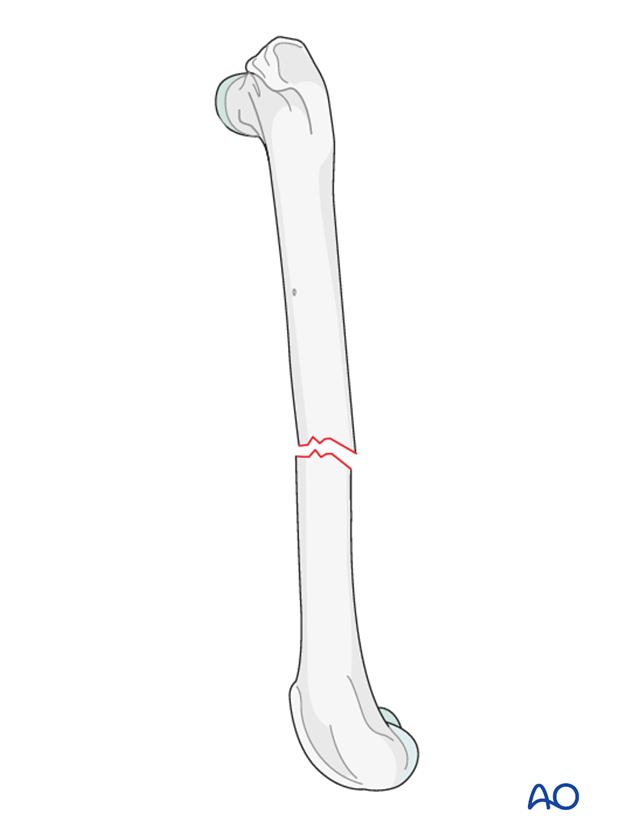
2. Patient positioning and approach
This procedure is performed with the patient in lateral recumbency, and through the open approach to the shaft.
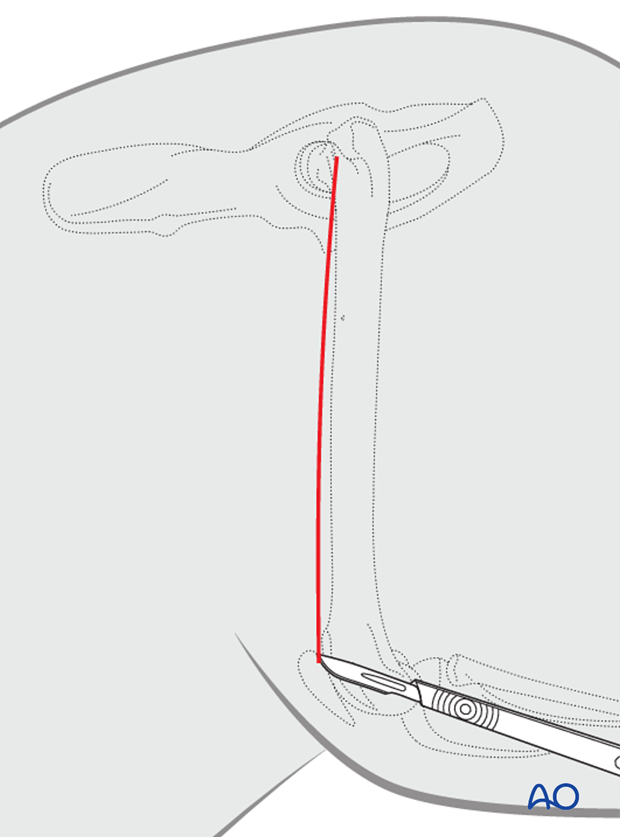
3. Surgical technique
Reduction
Bone holding forceps are applied to the proximal and distal fragment for distraction. This is necessary to counteract the strong muscles surrounding the bone.
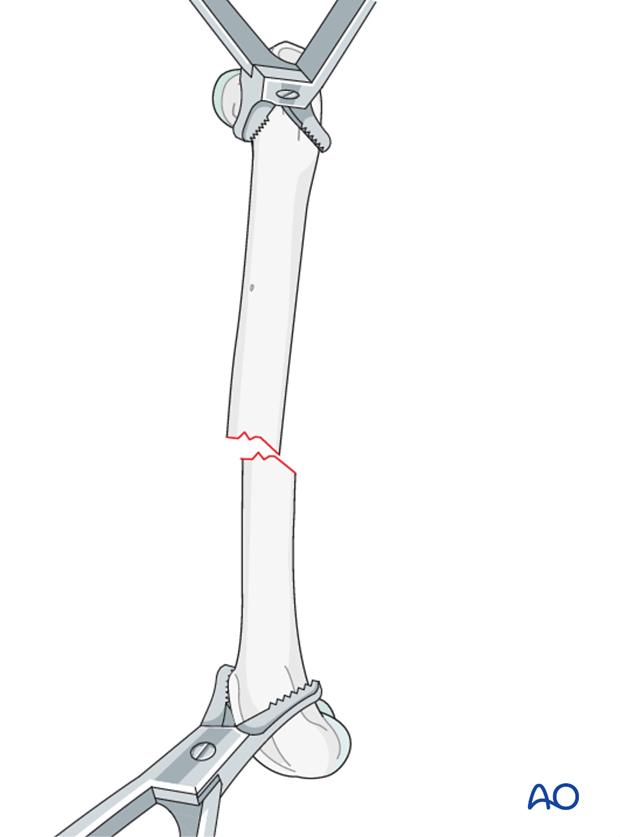
The fracture ends are elevated, toggled and then replaced back into reduction.
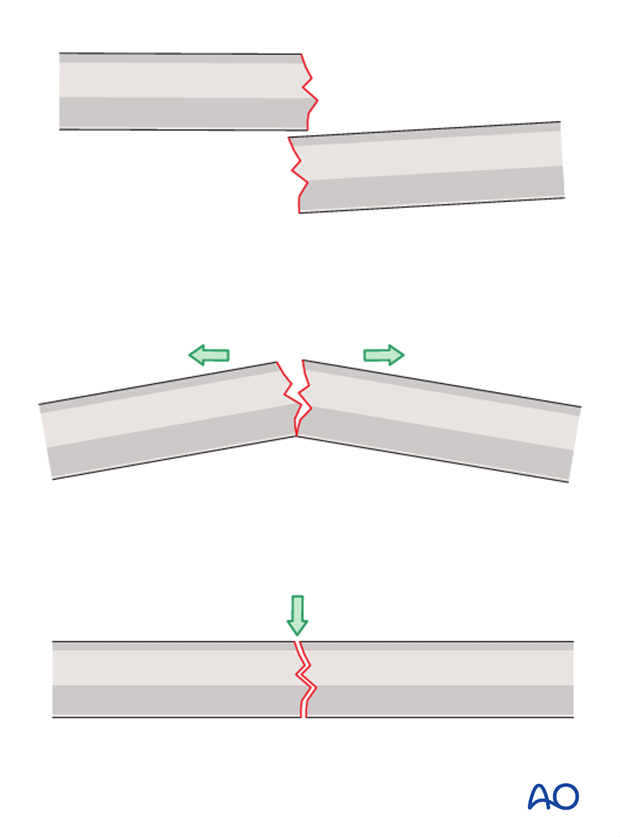
Alternatively, a Hohmann retractor or similar instrument can be used as a lever to bring the fragments into alignment.
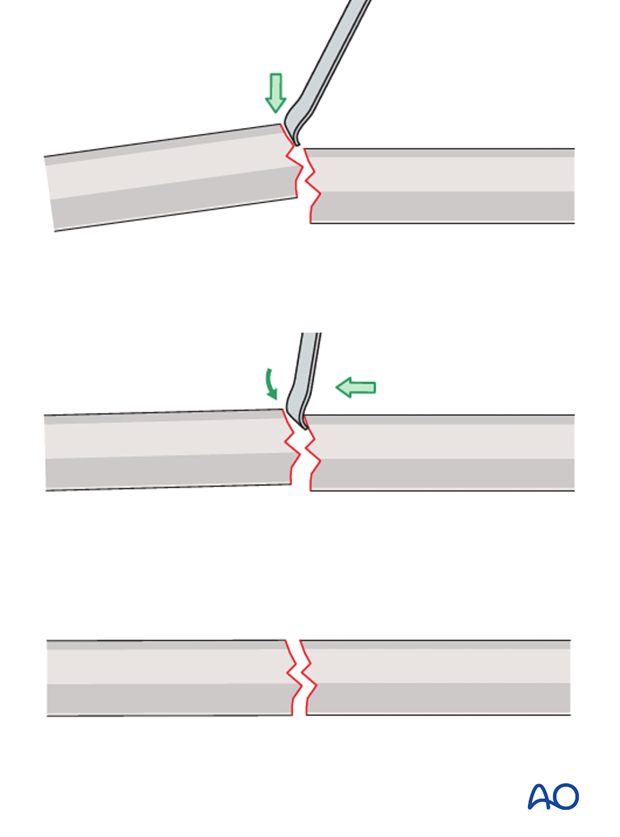
Preliminary fixation
Anatomical reduction is carefully checked. If required, the bone holding forceps are kept in place.
Plate selection
The length of the plate should allow placement of at least 3-4 screws in each major fragment.
Read more about plate preparation.
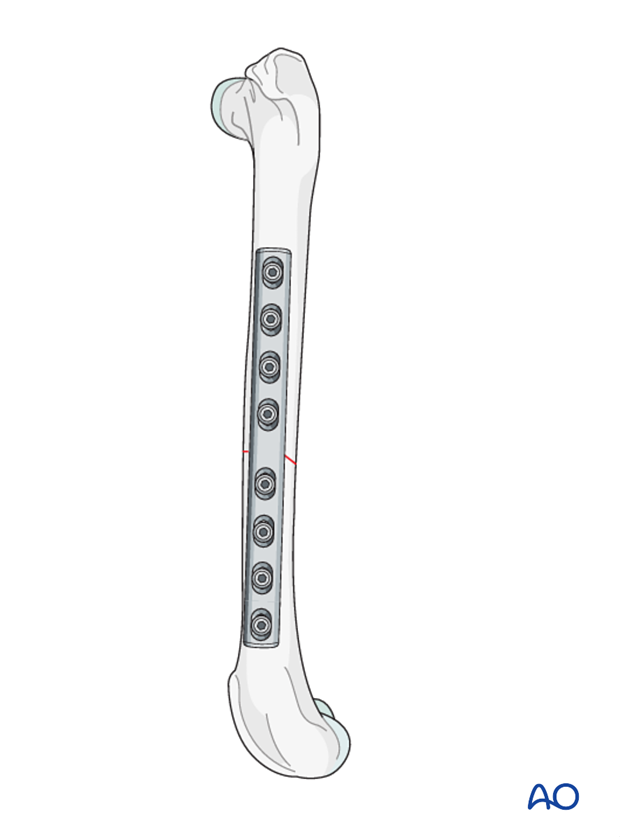
Plate placement
Weight bearing forces along the mechanical axis cause bending forces on the femur. These bending forces cause tension on the lateral surface of the bone. Tension forces are converted into compressive forces by placing the plate in compression on the lateral surface of the bone.
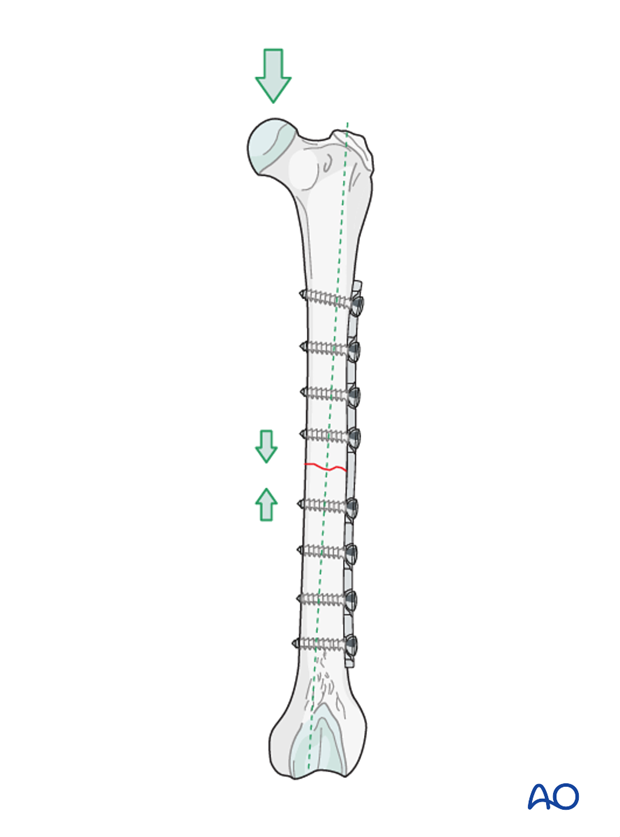
Plate application
Following contouring, the plate is applied to the lateral surface of the bone and secured with at least two bone holding forceps.
Note: It is important to use plate holding forceps to ensure the plate does not shift when drilling and placing the screws causing loss of reduction at the fracture site.
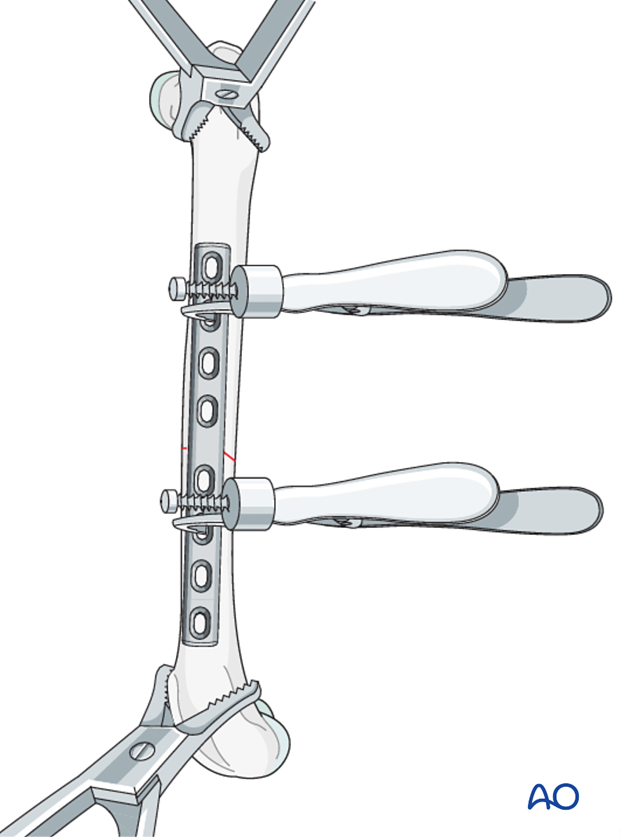
If a locking compression plate is used, a push- pull device can be inserted in both the proximal and distal fragment to achieve temporary plate stabilization instead of bone holding forceps.
With this temporary fixation in place, the plate position and anatomical reduction is checked thoroughly and adjusted, if required.
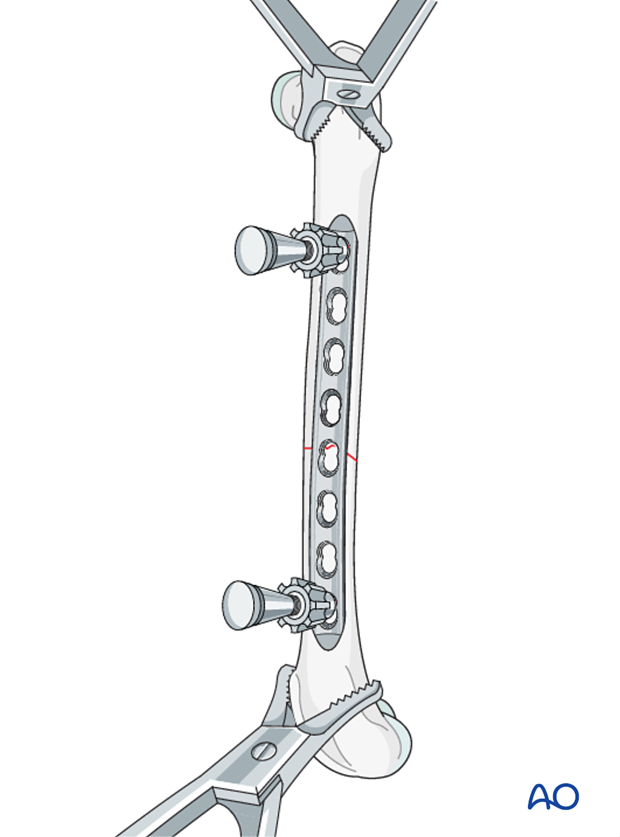
A screw is inserted after drilling with the neutral or load guide through the plate on one side of the fracture line. The screw is not fully tightened.
Note: Compression plates must be slightly over bent to produce a 2 mm gap between the plate and the bone at the fracture site. This will ensure even compression across the fracture line.
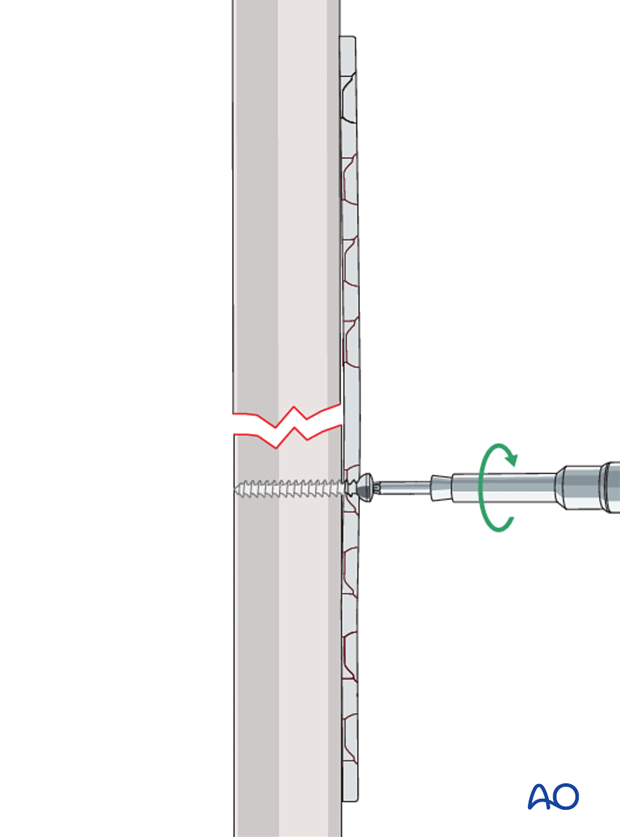
A second screw is inserted after drilling with the load guide on the other side of the fracture. The screws are tightened in an alternating fashion, generating compression across the fracture line.
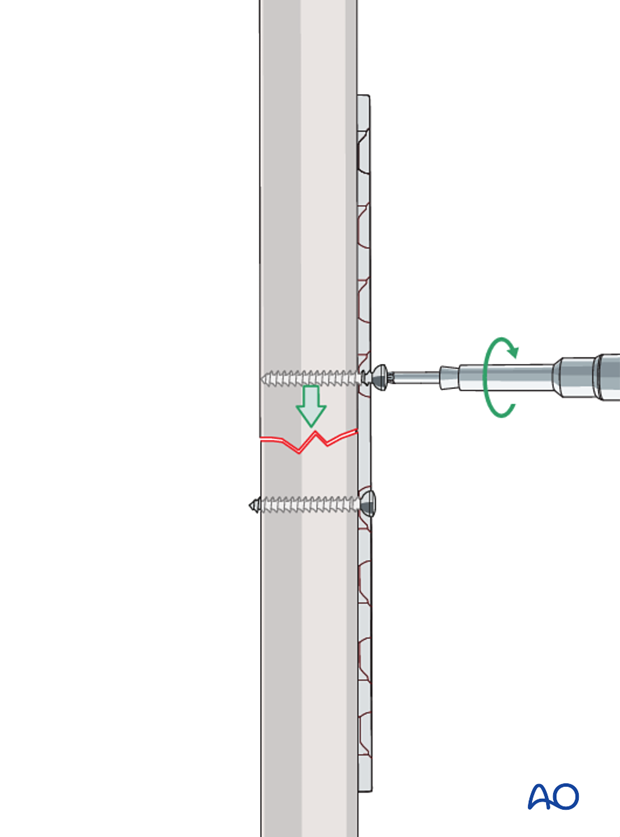
The most distal and most proximal screws are now inserted in a neutral fashion.

All remaining plate screws are inserted in a neutral mode.
Note: It is possible to use the load guide for up to two screws on either side of the fracture line to achieve compression. This is rarely necessary and it is possible to over compress the bone.

Fixation with a locking compression plate
It is not necessary to use any locking screws for compression plating. If a locking compression plate is used, compression across the fracture must be achieved with non-locking screws before the locking screws are added. If locking screws are used in the construct, it may not be necessary to fill all screw holes.
If a combination of non-locking and locking screws is used, the surgeon should keep in mind that the non-locking screws must always be inserted and fully tightened before any locking screw insertion occurs.
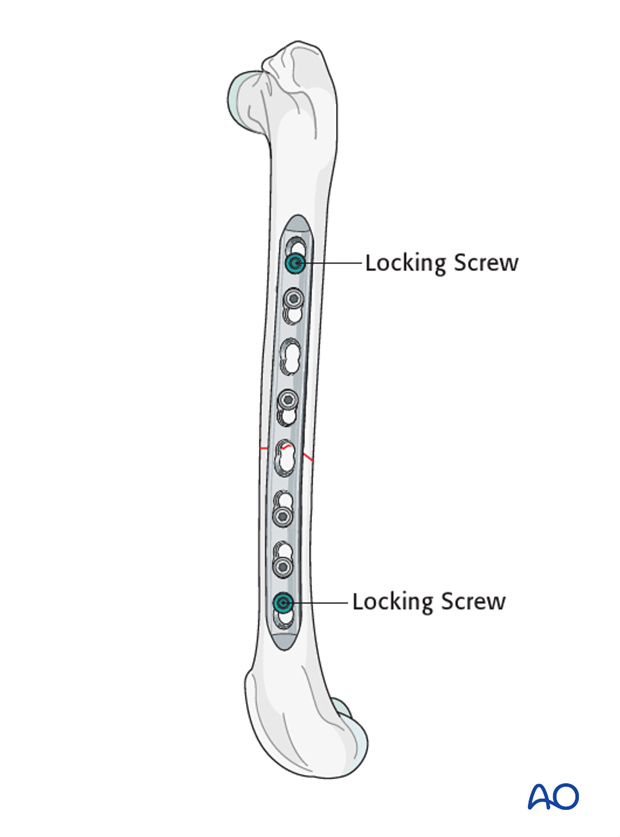
4. Case example
1 year old female DSH cat with a 32-A3 femoral fracture from being hit by a car.

The fracture was anatomically reduced and stabilized with a 7 hole 6.5 mm ALPS compression plate.
Alignment: anatomical
Apposition: anatomical
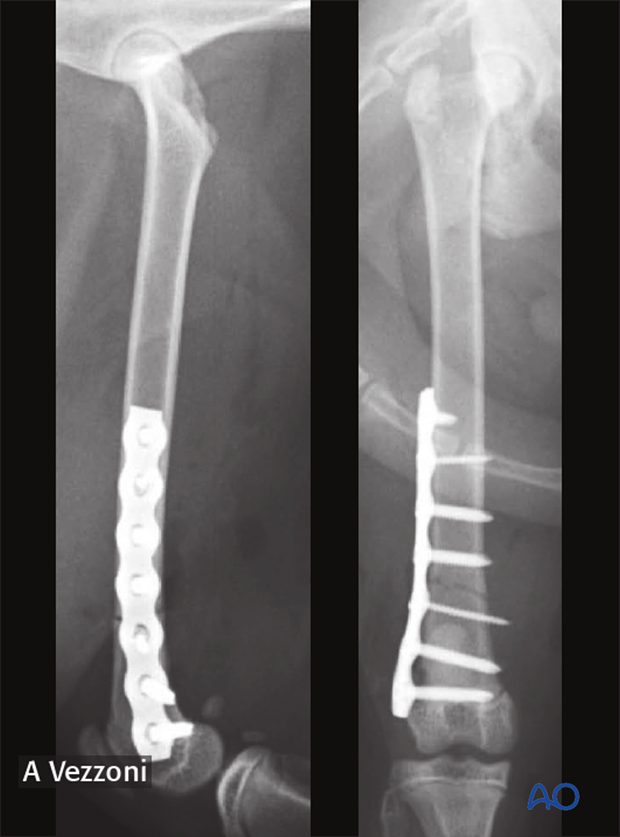
Postoperative radiographs at 30 days showing mild callus formation.
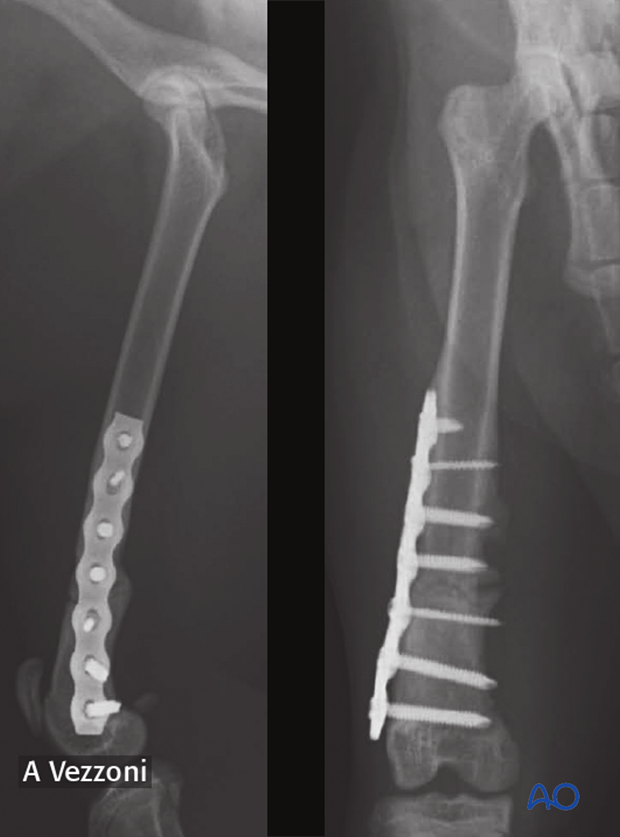
Postoperative radiographs at 120 days showing callus remodelling.
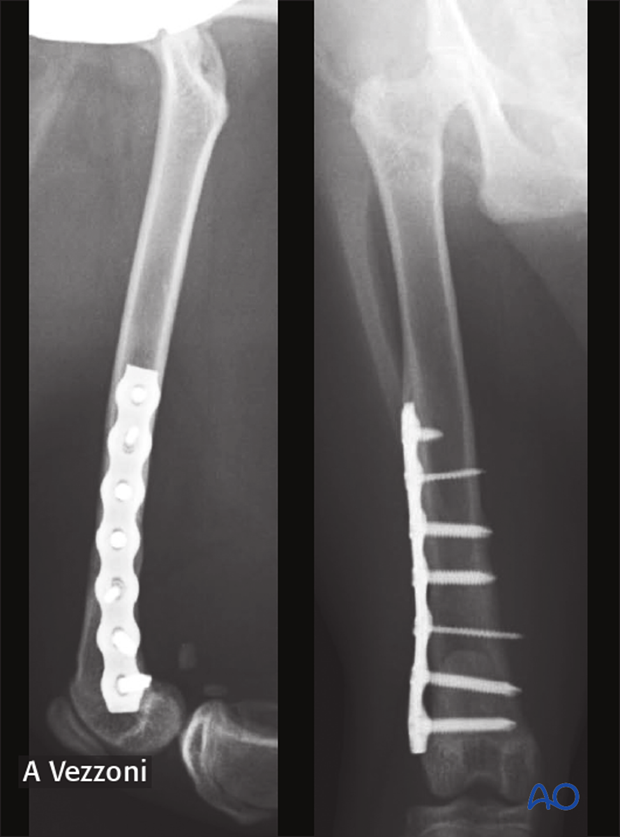
Postoperative radiographs at 120 days showing implant removal.
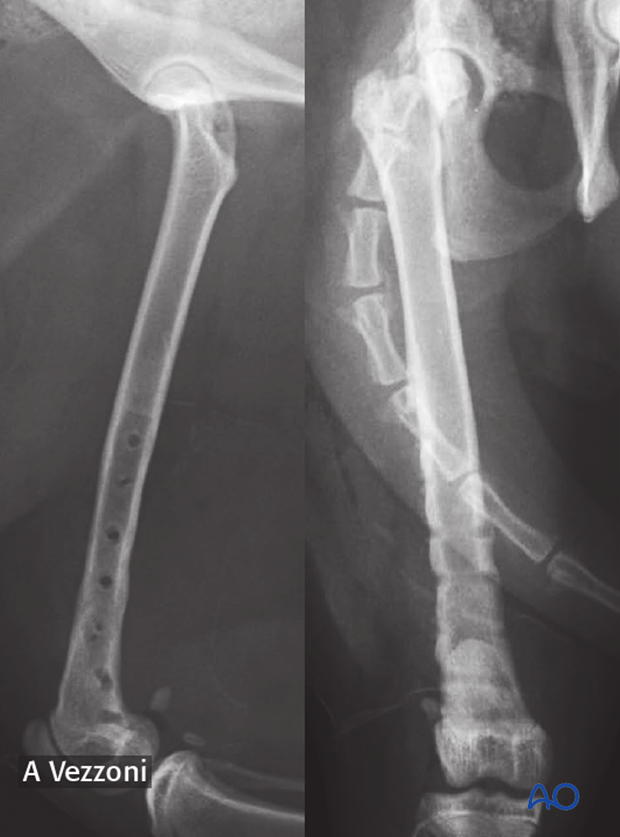
5. Aftercare
Phase 1: 1-3 day after surgery
Aim is to reduce the edema, inflammation and pain.
Integrative medical therapies, anti-inflammatory and analgesics.
Phase 2: 4-10 days after surgery
Aim is to resolve the hematoma, edema and control pain, and prevent muscle contracture.
Anti-inflammatory and analgesic medications may still be needed. Rehabilitation and integrative medical therapies can be used.
Special attention should be given to patients less than 1 year of age with a femoral fracture. Rehabilitation is strongly recommended to help prevent quadriceps muscle contracture.
If the cat is not starting to use the limb within fa few days after surgery, a careful evaluation is recommended.
10-14 days after surgery the sutures are removed.
Radiographic assessment is performed every 4-8 weeks until bone healing is confirmed.
~3-4 months after follow up radiographs surgery check bone healing.












